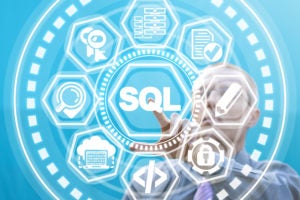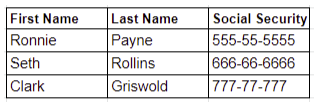If you are new to database administration or database development, you have no doubt heard the phrase “relational database management system” being tossed around. As database programmers or those that work with databases, we tend to think of database systems in terms of languages or platforms, like SQL, MySQL, or T-SQL. In today’s database programming tutorial, we are going to discuss RDBMS systems and answer the question: “What is a Relational Database Management System” and provide some tips for working with one.
Read: Top Online Courses for Learning MySQL
What is a Database?
While this tutorial deals specifically with relational databases, we should briefly discuss what database software, in general, is. To that end, a database is a system or program where data is stored. More than that, databases tend to store information or data in a way that is organized, easily accessible, and able to be manipulated. Manipulation of data or datasets, in this sense refers to being able to add, edit, delete, append, or query (we’ll cover this more later) information.
What is a Relational Database?
A relational database is a type of database that uses structures known as tables to store data for later use. We call it “relational” because of the method that data is stored – that is, in relation to other data. For instance, a table within a database may contain first names, last names, and social security numbers. Suppose we have the following information in a table:
Ronnie Payne 555-55-5555 Seth Rollins 666-66-6666 Clark Griswold 777-77-777
In the above example, the name Ronnie, last name Payne, and social security 555-55-5555 all belong to one record or group of information. If I want to be able to find out Ronnie’s social security number, then those two pieces of data must be connected – or related – for me to retrieve the information. Otherwise, all you have is a database full of random information that means nothing on its own.
To better understand this thought, we have to look at how tables are made, which we discuss in the next section.
What are Tables?
Tables in a database are used for storing information in an organized – and related – manner. You can think of a table as a grid, such as you might see in Microsoft Excel or other spreadsheet software. Tables are made up of columns, which run up and down or vertically, and rows, which run side to side or horizontally. Where columns and rows intersect is known as a cell, or, in database terminology, a record. Consider the following image:
In the above image, the word First Name acts as the header for our first column, letting the database administrator or programmer know what the rest of the data in that column represents. For instance, the First Name column holds values Ronnie, Seth, and Clark. Likewise, the second column, Last Name holds the values Payne, Rollins, and Griswold.
Row one, in this instance, would contain the following information:
Ronnie Payne 555-55-5555
Row two contains:
Seth Rollins 666-66-6666
And so on.
Further, each column will contain a data type: text-based values are known as string data types, while numeric values are known as integers for whole numbers and floatsfor decimal-point numbers.
What is a Relational Database Management System
Thus far, we have discussed databases as a whole, and relational databases; in this section, we will discuss relational database management systems – also known as RDBMS – and what they are used for.
A relational database management system (RDBMS) is software that lets database administrators and database programmers work with, view, manipulate, create, update, edit, delete, or query information stored in a relational database. This data manipulation occurs through a language known as Structured Query Language or SQL – pronounced “S-Q-L”.
You can learn more about SQL in our tutorial: What is SQL?
Types of Relational Database Management Systems
Just as there are different types of database systems, so, too, are there different types of RDBMS. Some of the most popular relational database management systems include:
- MySQL
- PostgreSQL
- Oracle DB
- SQL Server
- SQLite
We discuss each of this in more depth in our upcoming tutorial: What Are the Different Types of RDBMS?




